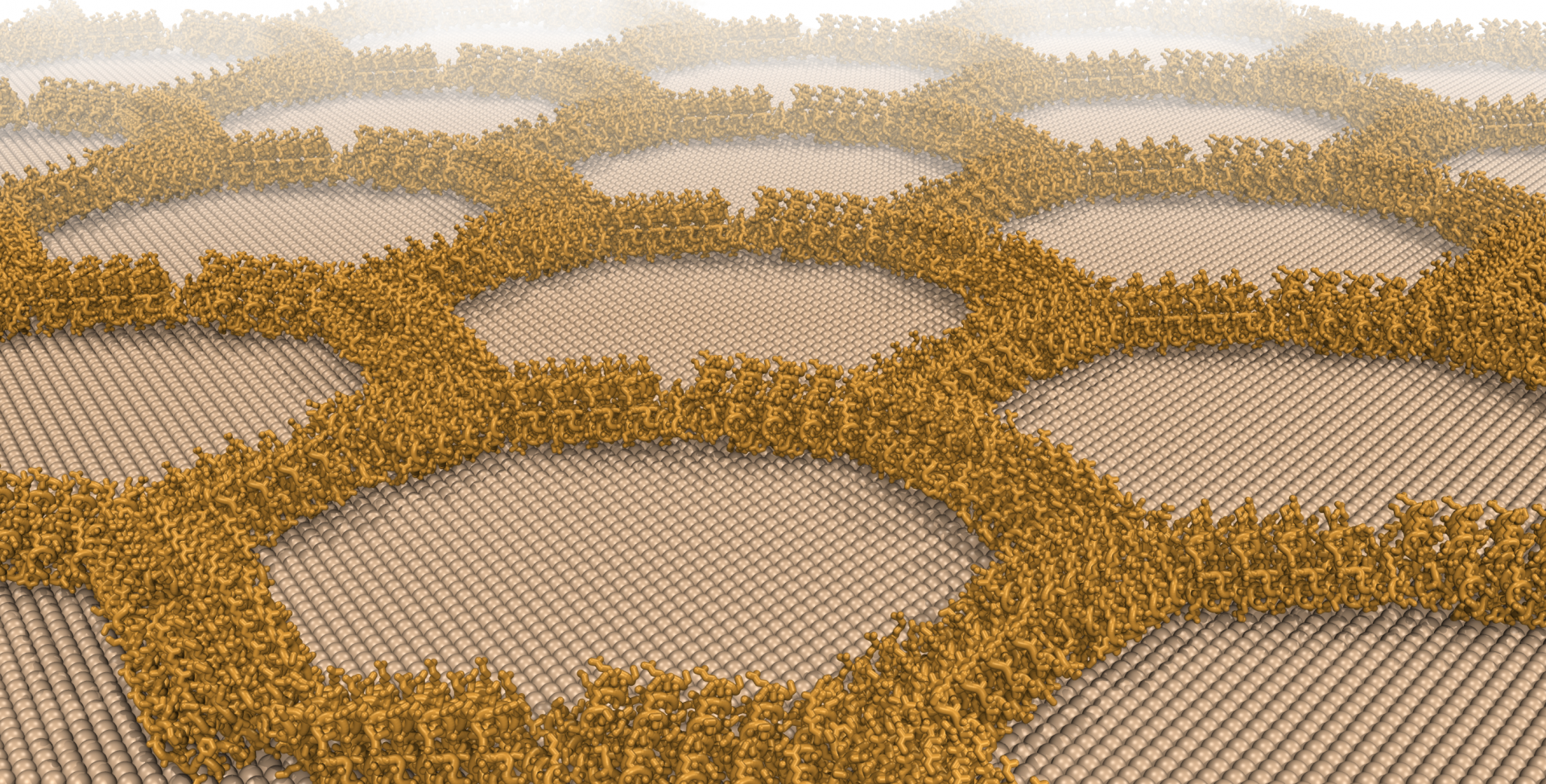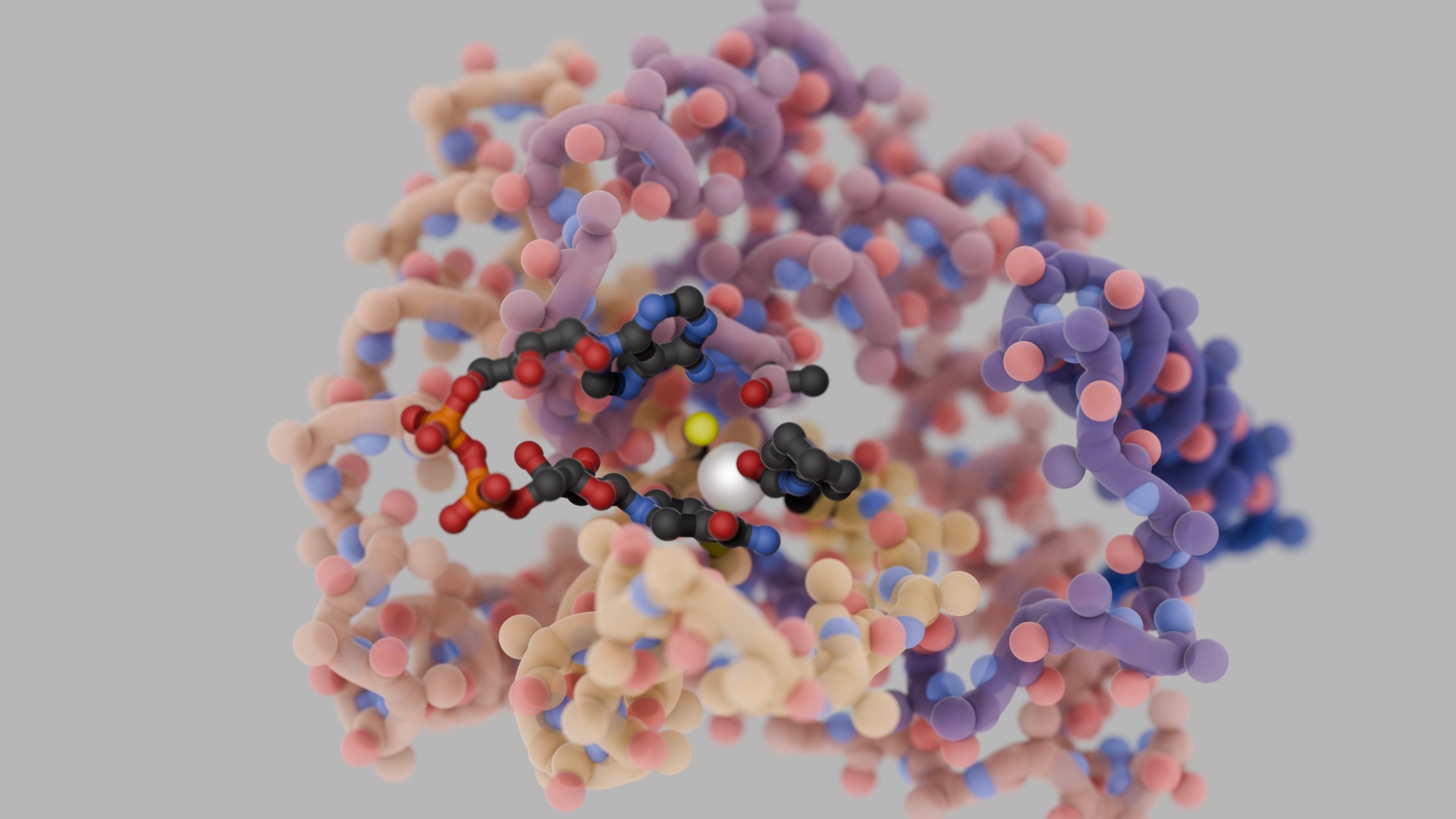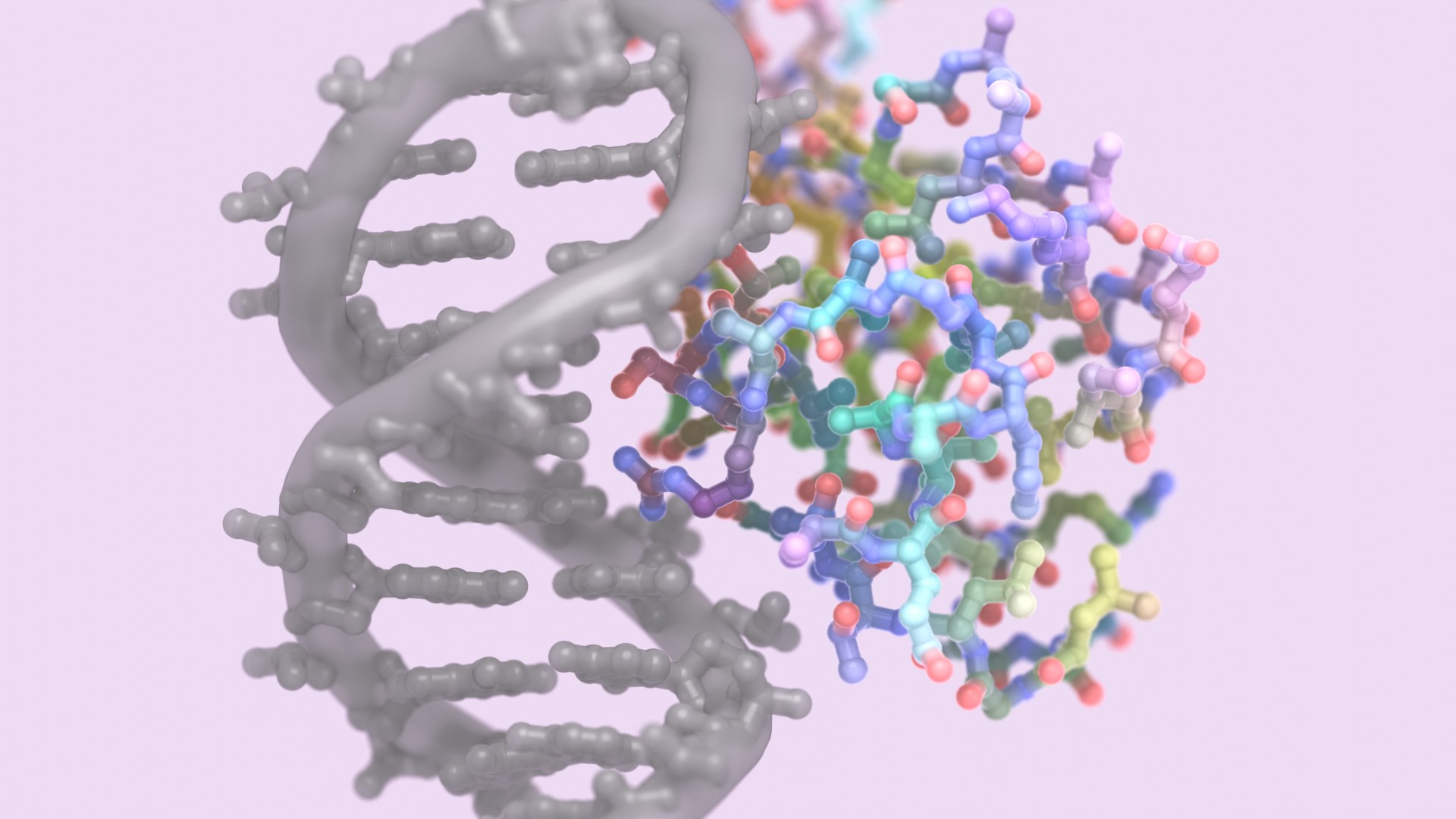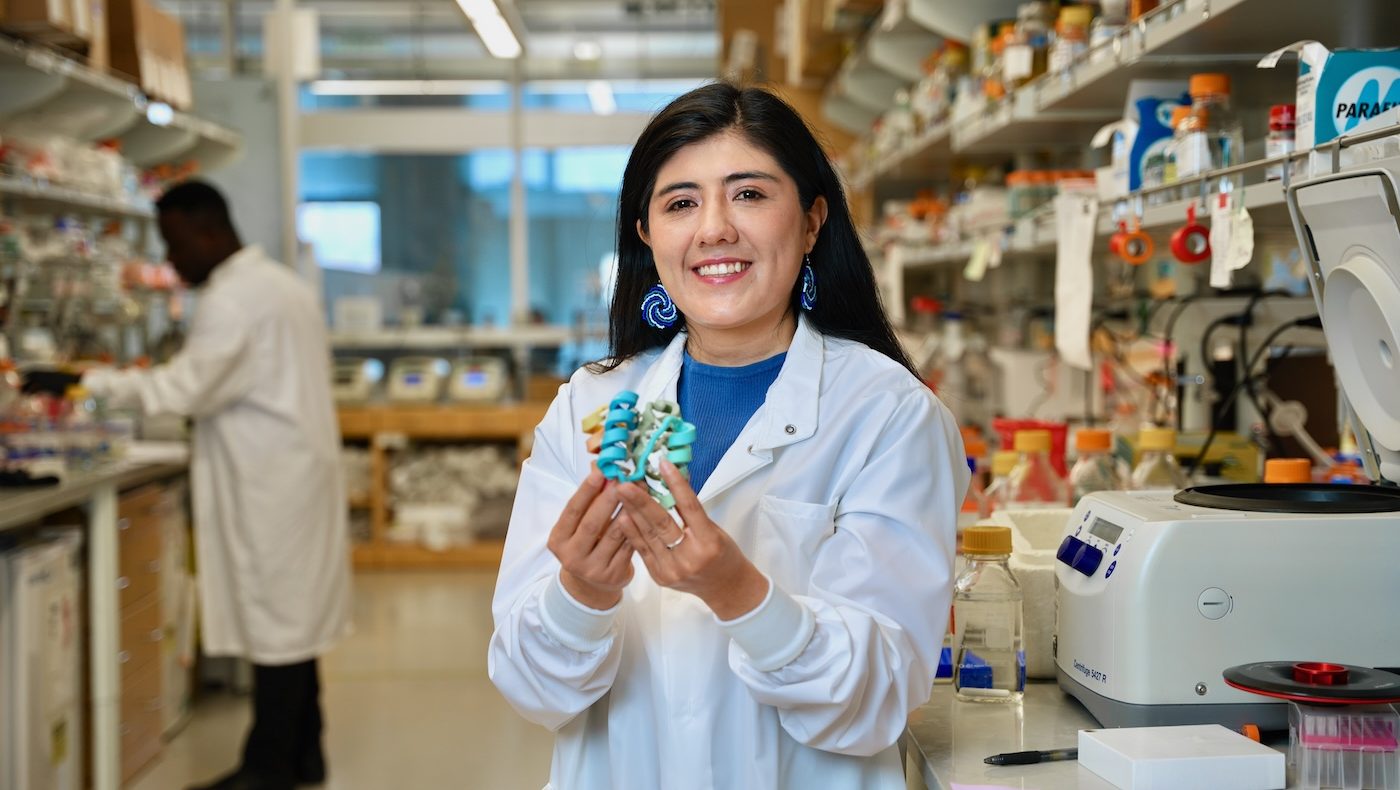Today we report the design of synthetic protein arrays that assemble on the surface of mica, a common and exceptionally smooth crystalline mineral. This work, which was performed in collaboration with the De Yoreo lab at PNNL, provides a foundation for understanding how protein-crystal interactions can be systematically programmed.
Our goal was to engineer artificial proteins to self-assemble on a crystal surface by creating an exact match between the pattern of amino acids in the protein and the atoms of the crystal.
“Biology has an amazing ability to organize matter from the atomic scale all the way up to blue whales,” said co-first author Harley Pyles, a graduate student at the Institute for Protein Design. “Now, using protein design, we can create brand new biomolecules that assemble from atomic- to millimeter-length scales. In this case, mica, a naturally occurring crystal, is acting like a big Lego baseplate on top of which we are assembling new protein architectures.”
Rosetta was used to engineer new proteins with customized patterns of electrical charge on their surfaces — new Lego blocks perfectly matched to the mica baseplate. Different designs formed different patterns when deposited on the mica surface, including crowded wires and highly organized honeycomb-like arrays.
“Even though we designed specific atomic-level interactions, we get these structures, in part, because the proteins are crowded out by the water and are forced to pack together,” said James De Yoreo. “This was unexpected behavior and demonstrates that we need to better understand the role of water in ordering proteins in molecular-scale systems.”
By redesigning parts of the proteins, the team was able to produce honeycomb lattices in which they could digitally tune the diameters of the honeycomb pores by just a few nanometers.
Designing atomically precise filaments and lattices from scratch could unlock entirely novel materials and new strategies for synthesizing semiconductor and metallic nanoparticle circuits for photovoltaic or energy storage applications. Alternatively, the protein honeycombs could be used as extremely precise filters, according to co-first author Shuai Zhang, a postdoctoral researcher at PNNL. “The pores would be small enough to filter viruses out of drinking water or filter particulates out of air,” he said.
Read the full report: https://www.nature.com/articles/s41586-019-1361-6 PDF





